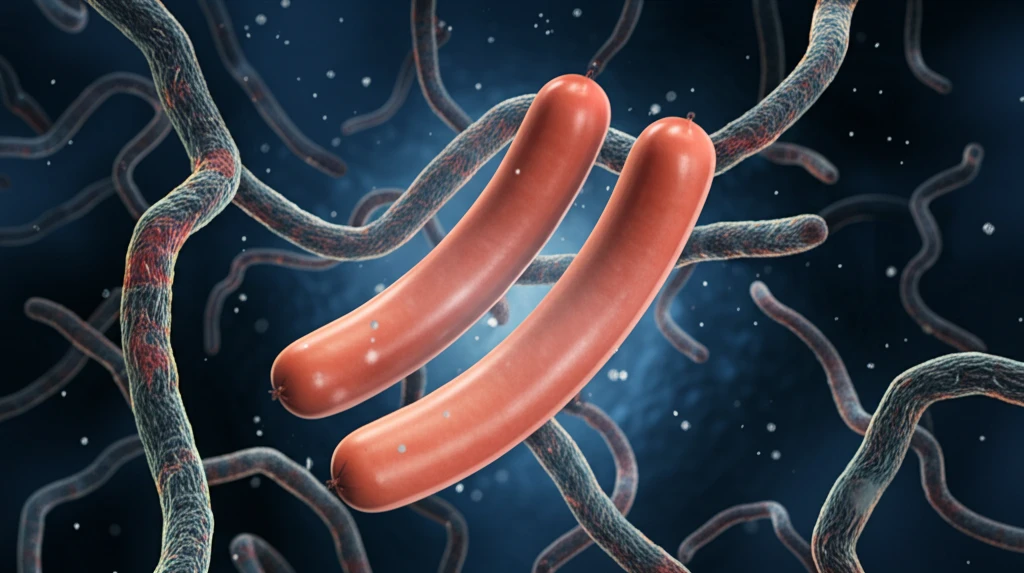
Beyond Meat: How Inulin-Enhanced Sausages Could Revolutionize Healthy Eating
"Discover the science behind inulin-based fat replacers and their potential to transform processed meats into healthier, prebiotic-rich options."
In an era where health and wellness are paramount, consumers are increasingly seeking food options that not only satisfy their palates but also contribute positively to their well-being. This demand has spurred significant innovation in the food industry, particularly in the realm of processed meats, which have traditionally been associated with high fat content and potential health risks.
Recent research has focused on reformulating popular processed foods like sausages to reduce fat content while enhancing their nutritional value. One promising avenue involves the use of inulin, a natural prebiotic fiber, as a fat replacer. Inulin offers the dual benefit of reducing unhealthy fats and enriching foods with beneficial prebiotic properties that support gut health.
A groundbreaking study published in the International Journal of Food Science and Technology explores the potential of inulin-based emulsion-filled gels as a fat replacer in dry fermented sausages. This research paves the way for creating healthier, prebiotic-rich meat products without compromising taste or texture, addressing a growing consumer need for functional and nutritious food choices.
The Science of Inulin: A Natural Fat Replacer and Prebiotic

Inulin is a naturally occurring polysaccharide found in various plants, such as chicory root, artichokes, and onions. It is classified as a prebiotic fiber, meaning it resists digestion in the small intestine and instead ferments in the large intestine, promoting the growth of beneficial bacteria. This fermentation process contributes to improved gut health, enhanced immune function, and better overall well-being.
- Reduced Fat Content: Sausages modified with inulin gelled suspension (I) and inulin linseed oil gelled emulsion (IO) exhibited significantly lower fat content compared to traditional sausages.
- Improved Fatty Acid Profile: IO sausages, in particular, showed lower levels of saturated fatty acids (SFA) and monounsaturated fatty acids (MUFA), with a higher concentration of polyunsaturated fatty acids (PUFA) and an improved n-6/n-3 ratio.
- Enhanced Prebiotic Content: The addition of inulin simultaneously replaces fat and enriches the sausages with prebiotic fiber, supporting gut health.
The Future of Healthier Processed Meats
As consumers continue to prioritize health and wellness, the demand for functional foods that offer both nutritional benefits and convenience will only continue to grow. Inulin-enhanced sausages represent a promising step in this direction, showcasing the potential of innovative food technology to transform traditionally unhealthy products into nutritious and gut-friendly options. Further research and development in this area could pave the way for a wider range of healthier processed meat alternatives, contributing to improved public health and well-being.
